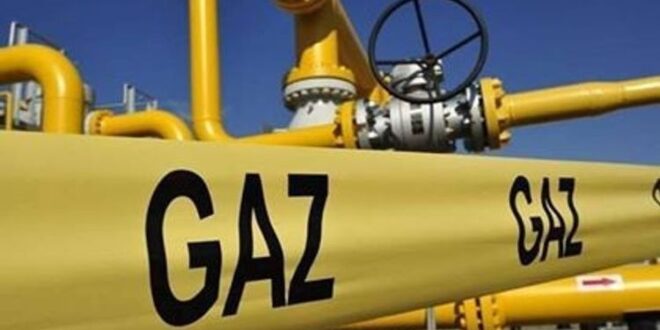Turkmenistan’s huge gas reserves have been generating considerable interest from potential importers following Ashgabat’s announcement in late July that it is open to the development of a pipeline to carry its gas across the Caspian and on to Europe.
Most significant so far has been the interest shown by Hungary, which on August 20 signed a framework gas supply agreement with Turkmenistan, during a state visit to Budapest by Turkmen President Serdar Berdymukhamedov.
Also in Budapest for meetings with Hungarian leader Viktor Orban were Turkish President Recep Tayyip Erdogan – who was there to oversee the signing of a gas supply agreement between Turkey’s state gas import-export and transit company Botas and Hungary’s state power company MVM for 300 million cubic metres a year of gas – and Azerbaijani President Ilham Aliyev, whose state oil company SOCAR is already supplying MVM with 1 billion cubic metres a year of Azerbaijani gas.
For Hungary and the EU, these three agreements are significant as they signal that the central European state is preparing for a future without guaranteed gas supplies from Russia, which is currently Hungary’s main supplier and with which Budapest continues to enjoy cordial relations.
However, flows of Russian gas, which arrive via Ukraine are set to stop by the end of 2024 with Kyiv having signalled its unwillingness to renew the existing transit agreement with Moscow – an understandable move given Russia’s ongoing invasion.
For Turkmenistan, the agreement is the most concrete evidence so far that Europe is serious about receiving gas from Turkmenistan’s vast reserves in place of Russian gas, imports of which have all but halted since Russia’s invasion of Ukraine early last year.
How much Turkmen gas Hungary will import, how the gas will be delivered, and when supply will commence, have not been made clear.
With no pipeline yet developed to carry gas from Turkmenistan across the Caspian, the only route currently open would be via the three-way gas swap deal between Turkmenistan, Iran and Azerbaijan first agreed in late 2021, and recently expanded.
Under that agreement Turkmenistan sends its own gas to northeastern Iran, which then transits the same volume of its own gas on to Azerbaijan, enabling Baku to meet its own growing gas demand and existing gas export agreements while freeing up further volumes of Azerbaijani gas for onward transit to Europe.
Although cumbersome, the three-way swap has been operating successfully since January last year and was recently expanded from 4.5 million cu m/day to 8 million cu m/day with plans to expand it further to 10 million cu m/day.
Gas sold by Turkmenistan could be transited from Azerbaijan using spare capacity in the three pipelines which make up the Southern Gas Corridor that currently carries Azerbaijani gas to Georgia, Turkey and on to Europe.
In July last year, Azerbaijan signed a memorandum of understanding with the European Union under which it undertook to double the volume of gas it sends to Europe to “at least 20 billion cu m/yr” by 2007.
However, it is still unclear whether Azerbaijan will be able to double its own gas production by then, with the Turkmen-Iran swap agreement currently the most likely source of gas to fill any gap.
Iran stands to also be the route to another gas-hungry market interested in importing Turkmen gas, namely Iraq.
The oil-rich Middle Eastern state also has large gas reserves of its own but decades of political instability and the high cost of developing the fields have so far prevented the investment necessary to bring them to market.
Baghdad has for some years been importing gas from Iran to generate electricity, but maintaining steady supplies has been difficult due to difficulties transferring payment caused by the ongoing US sanctions against the Islamic Republic, as well as Iran’s own periodic problems meeting domestic demand.
A preliminary agreement between Baghdad and Ashgabat signed on August 24 is expected to be followed by the end of this year with a formal agreement detailing volumes and transit details, which are expected to involve some form of barter arrangement which will avoid the necessity of transferring money to Tehran.
Turkey and Azerbaijan key to bringing Turkmen gas to market
Swap deals transferring gas via Iran are feasible for the small volumes of gas expected to be involved in agreements with Hungary and Iraq.
But with gas reserves estimated at between 10 and 14 trillion cubic metres, the main focus of interest in Turkmenistan remains its potential to replace the Russian gas that has all but stopped flowing to Europe since Russia’s invasion of Ukraine.
Any significant gas transit from Turkmenistan will require the development of a whole new pipeline infrastructure crossing the Caspian Sea and running through Azerbaijan, Georgia Turkey and the Balkans to connect with the existing central European pipeline network which, with no Russian gas, has the necessary spare capacity.
Azerbaijan has already signalled its interest in hosting such a transit line but has warned it is unwilling to bear any of the cost.
Turkey too has frequently signalled interest in transiting Turkmen gas to Europe.
In May Ankara issued a new 10-year import license to state gas importer Botas, for the import of up to 16 billion cu m/yr of Turkmen gas under a contract signed in the late 1990s, but never implemented it due to the lack of a pipeline.
Whether the development of such a pipeline is getting any closer is the subject of considerable interest in Europe.
Certainly, the presence of Turkmen President Serdar Berdymukhamedov, Turkish President Tayyip Erdogan and Azerbaijani President Ilham Aliyev, all in Budapest at the same time provided the opportunity for high-level talks.
An opportunity noted by Hungarian president Viktor Orban who, referring to his visitors, posted on X, “That’s what I call connectivity.”

 Iran Energy News Oil, Gas, Petrochemical and Energy Field Specialized Channel
Iran Energy News Oil, Gas, Petrochemical and Energy Field Specialized Channel



